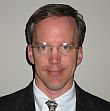
|
|
 Dr.
Mark W. Maier is a Distinguished Engineer at The
Aerospace Corporation, a non-profit Federally Funded
Research and Development Corporation with oversight
responsibility for the National Security Space Program.
At Aerospace he founded the systems architecting
training program and applies architecting methods
to government and commercial clients, particularly
in portfolios-of-systems and research and development
problems. He received the BS and MS degrees from
the California Institute of Technology and the Engineer
and PhD degrees in Electrical Engineering from the
University of Southern California. While at USC,
he held a Hughes Aircraft Company Doctoral Fellowship,
where he was also employed as a section head. Prior
to Dr.
Mark W. Maier is a Distinguished Engineer at The
Aerospace Corporation, a non-profit Federally Funded
Research and Development Corporation with oversight
responsibility for the National Security Space Program.
At Aerospace he founded the systems architecting
training program and applies architecting methods
to government and commercial clients, particularly
in portfolios-of-systems and research and development
problems. He received the BS and MS degrees from
the California Institute of Technology and the Engineer
and PhD degrees in Electrical Engineering from the
University of Southern California. While at USC,
he held a Hughes Aircraft Company Doctoral Fellowship,
where he was also employed as a section head. Prior
to  coming to The Aerospace Corporation he was an
Associate Professor of Electrical and Computer Engineering
at the University of Alabama at Huntsville. Dr. Maier
is co-author, with Dr. Eberhardt Rechtin, of The
Art of Systems Architecting, Second Edition, CRC
Press, the mostly widely used textbook on systems
architecting, as well more than 50 papers on systems
engineering, architecting, and sensor analysis. coming to The Aerospace Corporation he was an
Associate Professor of Electrical and Computer Engineering
at the University of Alabama at Huntsville. Dr. Maier
is co-author, with Dr. Eberhardt Rechtin, of The
Art of Systems Architecting, Second Edition, CRC
Press, the mostly widely used textbook on systems
architecting, as well more than 50 papers on systems
engineering, architecting, and sensor analysis.
|
 Presentation Presentation
What is IT Architecture?
- The Art of IT Architecture
If IT Architecture is somehow analogous to building architecture,
does it make sense to talk about "Art" in regard to IT? Can an enterprise
system have aesthetics, and if it did should anybody care? In this talk Dr.
Maier will critically examine the notion of porting concepts from civil architecture
to systems architecture, and examine how "art," or design methods
outside of science and mathematics, can or should play a role. He will show
that elements of civil architecture carry important lessons for more general
system architecting, and in particular the underlying concepts of artistic
design can be powerfully ported. This leads to insights in how complex system
properties, like flexibility or security, can be explicitly addressed in
design even when rigorous engineering methods are lacking.
 return
to program return
to program
|
|
|